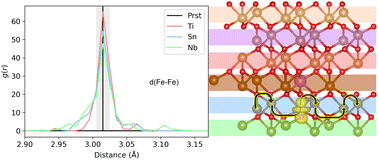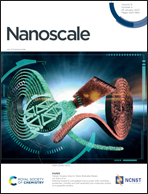The impacts of dopants on the small polaron mobility and conductivity in hematite – the role of disorder†
Abstract
Hematite (α-Fe2O3) is a promising transition metal oxide for various energy conversion and storage applications due to its advantages of low cost, high abundance, and good chemical stability. However, its low carrier mobility and electrical conductivity have hindered the wide application of hematite-based devices. Fundamentally, this is mainly caused by the formation of small polarons, which show conduction through thermally activated hopping. Atomic doping is one of the most promising approaches for improving the electrical conductivity in hematite. However, its impact on the carrier mobility and electrical conductivity of hematite at the atomic level remains to be illusive. In this work, through a kinetic Monte-Carlo sampling approach for diffusion coefficients combined with carrier concentrations computed under charge neutrality conditions, we obtained the electrical conductivity of the doped hematite. We considered the contributions from individual Fe–O layers, given that the in-plane carrier transport dominates. We then studied how different dopants impact the carrier mobility in hematite using Sn, Ti, and Nb as prototypical examples. We found that the carrier mobility change is closely correlated with the local distortion of Fe–Fe pairs, i.e. the more stretched the Fe–Fe pairs are compared to the pristine systems, the lower the carrier mobility will be. Therefore, elements which limit the distortion of Fe–Fe pair distances from pristine are more desired for higher carrier mobility in hematite. The calculated local structure and pair distribution functions of the doped systems have remarkable agreement with the experimental EXAFS measurements on hematite nanowires, which further validates our first-principles predictions. Our work revealed how dopants impact the carrier mobility and electrical conductivity of hematite and provided practical guidelines to experimentalists on the choice of dopants for the optimal electrical conductivity of hematite and the performance of hematite-based devices.

- This article is part of the themed collections: Nanoscale 2023 Emerging Investigators and Celebrating International Women’s Day: Women in Nanoscience


 Please wait while we load your content...
Please wait while we load your content...